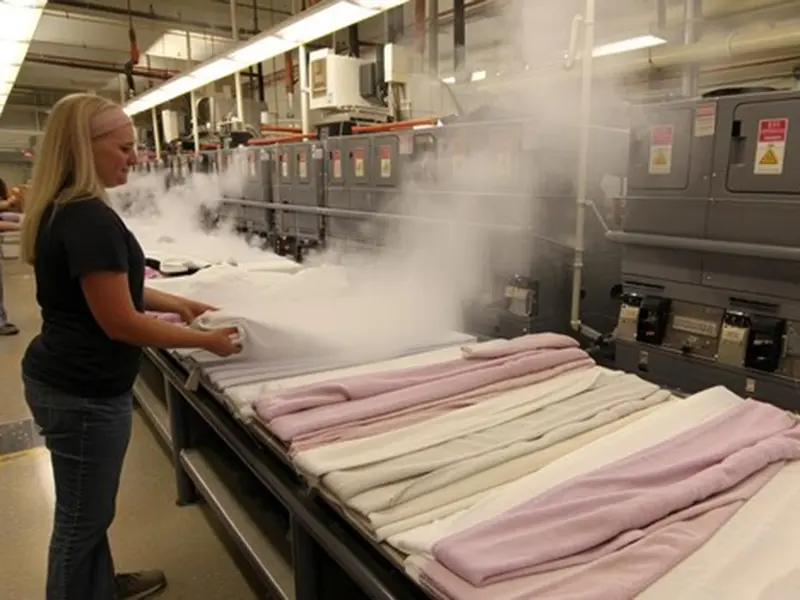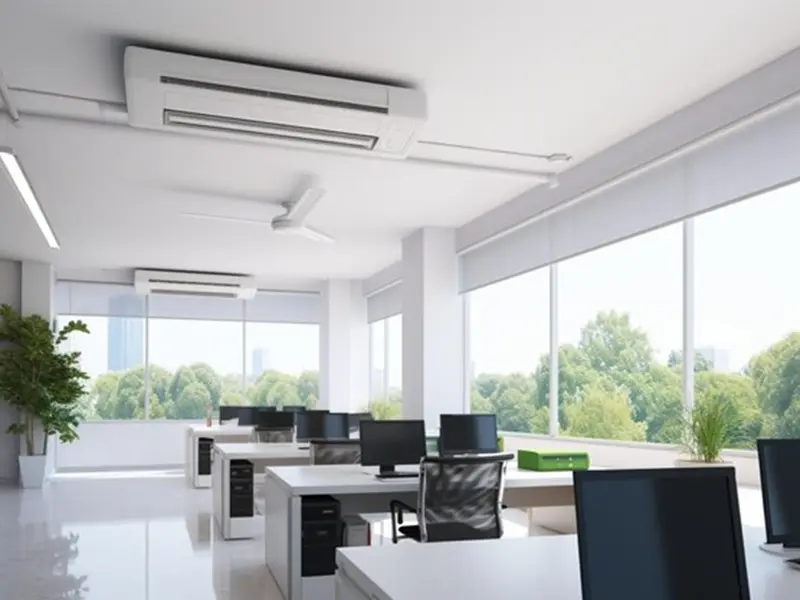How Does the Fin Design Impact the Performance of Copper Tube Copper Fin Heat Exchangers?

Fin design plays a pivotal role in determining the performance of copper tube copper fin heat exchangers. It directly influences heat transfer efficiency, durability, and operational costs. Copper tubes paired with aluminum fins offer exceptional durability and corrosion resistance, ensuring long-term reliability even in harsh environments. Their lightweight nature simplifies installation and reduces structural strain, optimizing energy efficiency. At Ningbo Senjun New Materials Co., Ltd., we specialize in crafting high-performance copper aluminum fin heat exchangers for diverse applications, including refrigerators, freezers, and dehumidifiers. Our innovative solutions cater to both commercial and residential needs, delivering unmatched versatility and quality.
Key Takeaways
- The way fins are designed changes how well heat exchangers work. Engineers need to think about fin thickness, spacing, and material to make heat transfer better.
- Copper fins move heat very well, so they are great for high-performance uses. Aluminum fins are lighter and cheaper, offering a good mix of performance and cost.
- Picking the right fin spacing is very important. Closer fins transfer heat better but might need more cleaning. Wider fins clog less but may not transfer heat as well.
Heat Transfer Efficiency in Copper Tube Copper Fin Heat Exchangers

The Role of Fin Thickness in Heat Dissipation
Fin thickness plays a crucial role in determining the heat dissipation capabilities of copper tube copper fin heat exchangers. Thicker fins provide a larger surface area for heat transfer, which can enhance the overall efficiency. However, excessively thick fins may create a longer thermal conduction path, reducing the rate at which heat dissipates. This balance is essential for achieving optimal performance. At Ningbo Senjun New Materials Co., Ltd., we carefully design fin thickness to maximize heat transfer while maintaining structural integrity. Our expertise ensures that each heat exchanger delivers superior thermal performance across various applications, from refrigerators to medical ultra-low temperature refrigerators.
How Fin Spacing Affects Thermal Performance
The spacing between fins significantly impacts the thermal performance of heat exchangers. Here's how:
- Closer fin spacing increases heat transfer efficiency but also raises pressure drop.
- Wider fin spacing reduces pressure drop, making it suitable for applications requiring lower airflow resistance.
- Applications demanding rapid heat exchange often benefit from tighter fin spacing.
| Fin Space (mm) | Source |
|---|---|
| 2.5 | Senjun Cooler |
| 2.6 | Senjun Cooler |
| 1.3 - 3.0 | Senjun Cooler |
Ningbo Senjun New Materials Co., Ltd. offers a range of fin spacing options tailored to meet specific thermal and pressure requirements, ensuring optimal performance for every application.
Material Selection and Its Impact on Heat Transfer
The choice of material for fins directly affects the heat transfer efficiency of copper tube copper fin heat exchangers. Copper, with a thermal conductivity of approximately 398 W/mK, is one of the most effective materials for heat dissipation. It is ideal for high-performance applications. Aluminum, while less conductive at 205 W/mK, remains a popular choice due to its lightweight nature and cost-effectiveness.
Copper is among the most thermally conductive substances on Earth, with a thermal conductivity rating 60% higher than aluminum. This makes it an excellent choice for heat exchangers requiring maximum efficiency.
| Material | Thermal Conductivity (Btu/hr × ft × F°) |
|---|---|
| Copper | 231 |
| Aluminum | 136 |
| Copper Nickel | 17 - 23 |
At Ningbo Senjun New Materials Co., Ltd., we specialize in copper aluminum fin heat exchangers, combining the strengths of both materials to deliver exceptional performance and durability.
Cost and Material Trade-offs in Fin Design
Balancing Performance and Material Costs
When designing fins for heat exchangers, I always consider the balance between performance and material costs. Copper fins, for instance, offer the highest thermal conductivity, making them ideal for applications requiring maximum heat transfer. However, they come with a higher price tag. Aluminum fins, on the other hand, provide a cost-effective alternative with good thermal performance and corrosion resistance. For specialized applications, materials like stainless steel or copper nickel may be used, but their lower thermal conductivity and higher costs often limit their use.
| Material | Cost Ranking | Thermal Conductivity (Btu/hr × ft × F°) | Corrosion Resistance Description |
|---|---|---|---|
| Copper | 4 | 231 | Excellent thermal conductivity. |
| Aluminum | 3 | 136 | Good corrosion resistance. |
| 316 Stainless Steel | 2 | 17-13 | Good corrosion resistance. |
| 304 Stainless Steel | 1 | 9.24 | Excellent corrosion resistance. |
| Copper Nickel | 1 | 17-23 | Very resistant to seawater corrosion. |
At Ningbo Senjun New Materials Co., Ltd., I ensure that our copper aluminum fin heat exchangers strike the perfect balance between cost and performance, catering to diverse applications like refrigerators and dehumidifiers.
Manufacturing Complexity and Its Effect on Pricing
The complexity of manufacturing processes significantly influences the pricing of copper tube copper fin heat exchangers. For example, welding, which is often used to join copper tubes and fins, requires skilled labor and specialized equipment. This increases production costs compared to simpler methods like riveting. Additionally, the choice of materials impacts manufacturing time. Stainless steel, being harder to work with, adds to the overall cost. I always aim to optimize these processes to deliver high-quality products at competitive prices.
Choosing Between Copper and Aluminum for Fins
Selecting the right material for fins depends on the specific requirements of the application. Copper fins excel in heat transfer efficiency, making them suitable for high-performance systems. Aluminum fins, while less conductive, are lightweight and more affordable, making them ideal for cost-sensitive projects. At Ningbo Senjun New Materials Co., Ltd., I combine copper tubes with aluminum fins to create heat exchangers that offer the best of both worlds—exceptional performance and cost-effectiveness.
Durability and Maintenance of Copper Tube Copper Fin Heat Exchangers

Longevity and Corrosion Resistance in Fin Design
Copper fins excel in durability, making them ideal for demanding environments. Their natural resistance to corrosion ensures longevity, even in water-based or humid conditions. Unlike aluminum, which may corrode more easily, copper withstands moisture and other corrosive elements effectively. This robustness reduces maintenance needs and extends the lifespan of the heat exchanger. I have found that combining copper tubes with aluminum fins creates a balanced solution, offering both durability and cost-effectiveness. At Ningbo Senjun New Materials Co., Ltd., we prioritize these qualities in our copper aluminum fin heat exchangers, ensuring reliable performance across various applications.
Maintenance Challenges with Different Fin Configurations
Fin configurations directly influence maintenance requirements. Tighter fin spacing, while enhancing heat transfer, can accumulate dust and debris more quickly. This buildup increases the need for regular cleaning to maintain efficiency. On the other hand, wider fin spacing reduces clogging but may compromise thermal performance. I always recommend selecting a configuration that aligns with the operational environment. For example, in dusty settings, wider spacing minimizes maintenance challenges. At Ningbo Senjun New Materials Co., Ltd., we offer customizable fin designs to address these specific needs, ensuring optimal performance with minimal upkeep.
Optimizing Fin Design for Long-Term Reliability
A well-optimized fin design ensures long-term reliability by balancing thermal performance, durability, and maintenance ease. Copper's resistance to oxidation plays a crucial role in maintaining the structural integrity of the fins over time. I focus on designing fins that not only maximize heat transfer but also withstand environmental stressors. This approach reduces the likelihood of system failures and extends the operational life of the heat exchanger. At Ningbo Senjun New Materials Co., Ltd., our copper aluminum fin heat exchangers are engineered with these principles in mind, delivering dependable solutions for applications like refrigerators, dehumidifiers, and medical equipment.
Fin design plays a vital role in the performance of copper tube copper fin heat exchangers. Engineers must evaluate key factors such as fin spacing, thickness, and material to achieve optimal results. Ningbo Senjun New Materials Co., Ltd. has introduced advanced designs that enhance thermal efficiency and reduce refrigerant usage, ensuring cost savings and environmental sustainability. Their copper aluminum fin heat exchangers combine excellent thermal conductivity with corrosion resistance, delivering long-term reliability across diverse applications. A well-balanced fin design ensures maximum performance, making it essential for engineers to carefully assess these characteristics.
By prioritizing innovative solutions, Ningbo Senjun New Materials Co., Ltd. continues to lead the industry in providing high-performance heat exchangers for refrigerators, dehumidifiers, and more.
FAQ
What makes copper aluminum fin heat exchangers a popular choice?
Copper aluminum fin heat exchangers combine copper's excellent thermal conductivity with aluminum's lightweight and cost-effectiveness. At Ningbo Senjun New Materials Co., Ltd., I ensure these qualities meet diverse application needs.
How do I choose the right fin spacing for my application?
Fin spacing depends on airflow and thermal requirements. Tighter spacing enhances heat transfer, while wider spacing reduces clogging. I recommend consulting Ningbo Senjun New Materials Co., Ltd. for tailored solutions.
Why is material selection important in heat exchanger design?
Material selection impacts thermal performance, durability, and cost. I use copper and aluminum to balance efficiency and affordability in Ningbo Senjun New Materials Co., Ltd.'s heat exchangers.
Tip: Always consider your specific application needs when selecting materials or fin configurations for optimal performance.


















